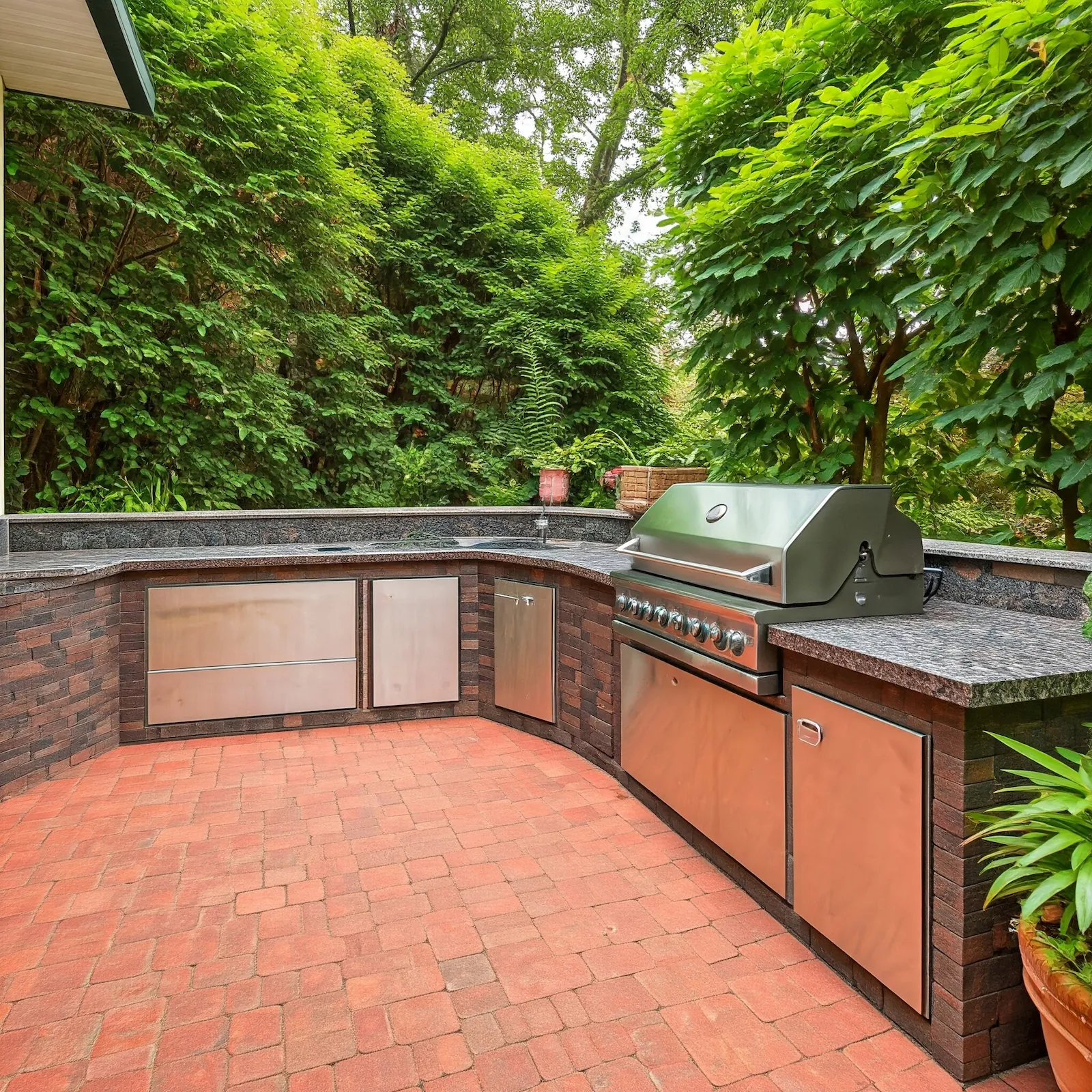
Question: Can You Build an Outdoor Kitchen on Top of Pavers?
Answer: Yes, you can build an outdoor kitchen on top of pavers but with caveats. Pavers alone aren’t a sufficient foundation for the weight. A stable concrete slab base is required beneath the pavers to support the kitchen structure.
Outdoor Kitchen Construction on Pavers: Essential Considerations
Building an outdoor kitchen expands living space and offers a unique cooking and entertaining area. Pavers present a seemingly simple foundation, but specific factors determine their suitability for supporting an outdoor kitchen. This article addresses the key considerations for building an outdoor kitchen on top of pavers.
Paver Foundation Assessment
A stable, level surface is crucial for any outdoor kitchen. Examine the existing paver patio for several key characteristics:
Paver Type and Quality:
Some pavers, like concrete or brick, offer greater strength and stability than others. Assess the pavers’ condition, looking for cracks, chips, or signs of deterioration.Base Material:
The material beneath the pavers plays a critical role in overall stability. A compacted gravel base generally provides better support than sand. Determine the depth and quality of the base material.Drainage:
Proper drainage prevents water accumulation, protecting the paver base and the kitchen structure. Check for adequate sloping and drainage solutions in the existing patio.
These factors influence the pavers’ load-bearing capacity and long-term performance under the weight and use of an outdoor kitchen.
Click here for more information on cupboard refacing Toronto
Related Article: Can You Put a Refrigerator in an Outdoor Kitchen?
Related Article: Can I Build an Outdoor Kitchen on a Deck?
Design and Planning for Paver-Based Kitchens
The outdoor kitchen’s design directly impacts its compatibility with a paver foundation. A smaller, lighter design often presents fewer challenges than a large, elaborate kitchen.
Modular Kitchen Options:
Modular units offer flexibility and often distribute weight more evenly. They allow for customization while potentially minimizing the need for extensive base modifications.Material Choices:
Opting for lighter countertop materials, such as stainless steel or granite tile, can reduce the overall weight placed on the pavers. Consider the weight implications of all materials.
Careful planning and design create a functional and structurally sound outdoor kitchen on a paver base.
Reinforcing Existing Paver Patios
If the existing patio requires reinforcement, several options exist to increase its load-bearing capacity:
Adding a Concrete Slab:
Pouring a concrete slab over the existing pavers creates a strong, stable foundation. Ensure proper preparation and curing of the concrete for optimal performance.Compacting the Base:
Further compacting the existing base material, whether gravel or sand, can improve stability. This process may involve removing and replacing some of the base material.Installing Additional Pavers:
Adding a layer of pavers over the existing ones can distribute weight more effectively. Ensure the new pavers interlock securely with the existing surface.
Choosing the best reinforcement method depends on the existing patio’s condition and the planned kitchen’s weight and design.
Local Building Codes and Regulations
Always check local building codes and obtain necessary permits before beginning construction. Regulations often specify requirements for outdoor kitchen construction, including foundation stability and fire safety.
Setback Requirements:
Adhere to local setback requirements for structures from property lines and other buildings. This ensures safety and compliance with local regulations.Gas and Electrical Connections:
If the kitchen includes gas or electrical appliances, engage licensed professionals for installation. This guarantees safe and code-compliant connections.
Compliance with building codes and regulations ensures the safety and legality of the outdoor kitchen project.
Long-Term Maintenance and Considerations
Proper maintenance preserves the outdoor kitchen’s structural integrity and appearance. Regular cleaning prevents staining and deterioration of the pavers and kitchen components.
Sealing Pavers:
Seal the pavers to protect them from the elements and spills. Choose a sealer appropriate for the specific paver type.Covering the Kitchen:
Using a cover protects the kitchen appliances and countertops during inclement weather and extends their lifespan.
Regular maintenance and preventative measures ensure the long-term enjoyment of the outdoor kitchen.
Conclusion
Building an outdoor kitchen on top of pavers can be a successful project with careful planning and execution. Assess the existing patio, consider the kitchen’s weight and design, and address any necessary reinforcements. Adhering to local building codes and implementing a regular maintenance schedule ensures a safe, functional, and enjoyable outdoor kitchen for years to come. [ 1 ]
References
1. https://danver.com/blog/outdoor-kitchen-refrigerator/

Blue Malue Get in touch with Blue here.
